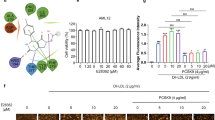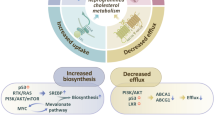Abstract
Background.
Previous epidemiological and experimental studies indicated cholesterol as a central player in Alzheimer disease (AD). Here, we utilized skin fibroblasts and PBMC as possible ex vivo models for the study of dysfunctions of cholesterol homeostasis which may be related to AD development. Methods. We analyzed cholesterol homeostasis using colorimetric, thin layer chromatography (TLC), and histologic technique in ex vivo cultures of skin fibroblasts and PBMCs from patients with probable AD and their first-degree relatives. Additionally, healthy age-matched individuals served as controls. Findings. As compared to controls, skin fibroblasts and PBMCs from AD patients, displayed an evident alteration of cholesterol metabolism; namely an anomalous accumulation of cholesterol esters in their cytoplasm. No change in intracellular free cholesterol was observed. Cellular overloading of cholesterol esters was dramatically increased after specific growth stimulation of the different cell types. Cholesterol ester accumulation was negatively correlated to plasma levels of high density lipoprotein cholesterol (HDL-C) and positively correlated with severity of cognitive symptoms measured by Mini-Mental State Examination (MMSE). Inhibitors of cholesterol esterification, such as progesterone and SaH, as well as a potent inhibitor of cell proliferation, RAD, were able to prevent accumulation of cholesterol esters. Interpretation. Changes of cholesterol esters in the peripheral compartment may be indicative of a systemic alteration of intracellular cholesterol homeostasis, which in turn might create a cellular milieu favourable to the production of ß-amyloid in the brain. Pathways that control cholesterol esterification might represent promising targets for novel diagnostic and therapeutic AD approaches.
Similar content being viewed by others
Article PDF
Author information
Authors and Affiliations
Corresponding author
Rights and permissions
About this article
Cite this article
Pani, A., La Colla, P., Abete, C. et al. Changes in Cholesterol Metabolism in Peripheral Cells of Alzheimer Disease Patients and Their Relatives. Nat Prec (2007). https://doi.org/10.1038/npre.2007.1246.1
Received:
Accepted:
Published:
DOI: https://doi.org/10.1038/npre.2007.1246.1



